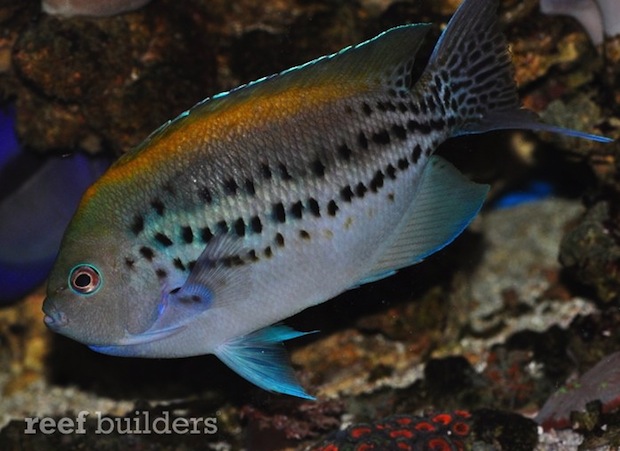There are rare fish in this world, and then there are RARE fish; fish that are so remarkable that money cannot buy. This is the true treasure for any rare fish fanatic. While peppermint angels are hard to come by, they can still be obtained with relative difficulty and a lot of money. The hybrid you see above is a random one in ten thousand roulette wins that no one can guarantee its appearance in the hobby. Such nuggets are often hidden quietly, nestled within common fish from bulk shipments from the Philippines or Bali. Rare fish owner Jimmy Ma strikes again, this time with an absolutely magnificent hybrid of the Bellus Angelfish.
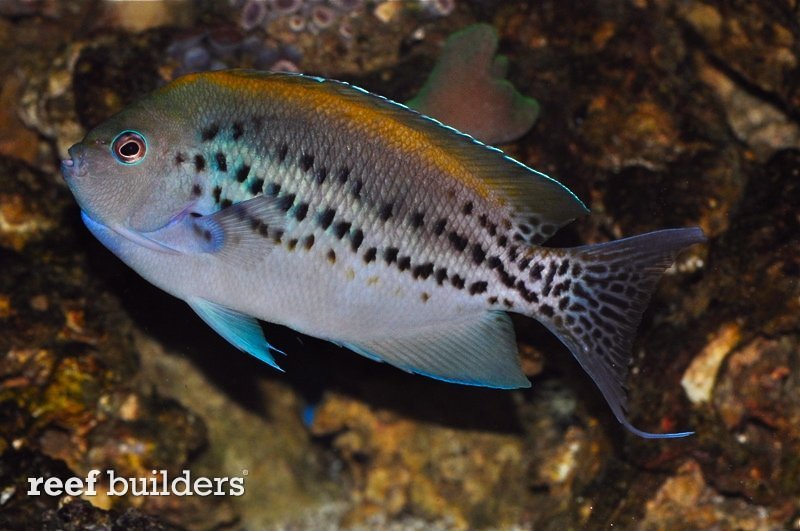
Genicanthus hybrids are very rare in the hobby, and the majority includes genetic input from the promiscuous G. melanospilos and G. lamarck. While the exact make up for this hybrid here is not clear, we know for sure that it is at least 50% G. bellus. Genicanthus bellus is a less common representative of this genus which displays striking sexual dichromatism in the males and females. The males are blue-grey with two horizontal yellow stripes, while females comes in black and blue. The orange dorsal is a strong indication that G. bellus blood is involved, but the unusual linear spot pattern is something of questionable doubt.

Hybrids involving the Bellus angelfish are rare and this is probably the first documented individual available on the inter web. It is quite likely the other half to this fish came from G. lamarck, as the spotted pattern suggests. The close up picture shows the subtle details that complements the wacky design. The cerulean colored ventral fin is amazing and akin to a colored cellophane paper. The same shade of blue is seen encircling the eye, as well as outlining each black spot present on the body.
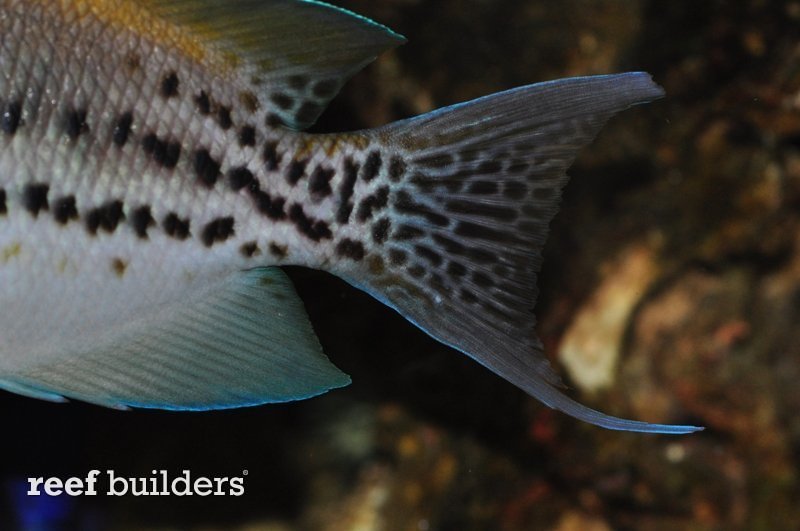
Apart from the fish’s orange dorsal region, the tail as well shows strong traits of G. bellus. Fully grown male Bellus angelfish often develop a labyrinth like pattern consisting of spots and blocks on the tail, which is seen in this specimen as well. The fish was obtained from Bali, where some of the weirdest hybrids and lesser known reef fish often show up from. Philippine and Bali shipments are well known to rare fish aficionados as a treasure trove of goodies. As many reef fish are collected without specific targeting from that area, it is not unusual to find specimens that normally do not make their way into the aquarium scene – in other words, fish that are less mainstream.
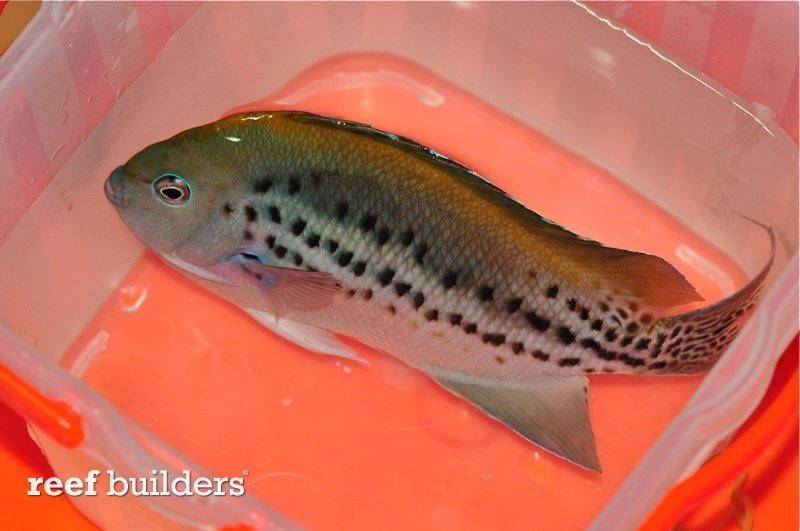
Most rarities from this region end up this way, starting out as miscellaneous imports in ones and twos, until the world knows about it and is specifically targeted for capture. Some examples are Pseudoplesiops rosae, Pseudochromis tapeinosoma, the list goes on. Stalking such shipments especially from wholesalers are often rewarding, as the spoils are often not overly pricey due to the origin of capture as well as the mostly unknown identity. Jimmy Ma from Hong Kong has obviously capitalised on his gem spotting skills as we have shown time again, the spectacular fishes he manages to sieve out Philippines and Bali shipments.
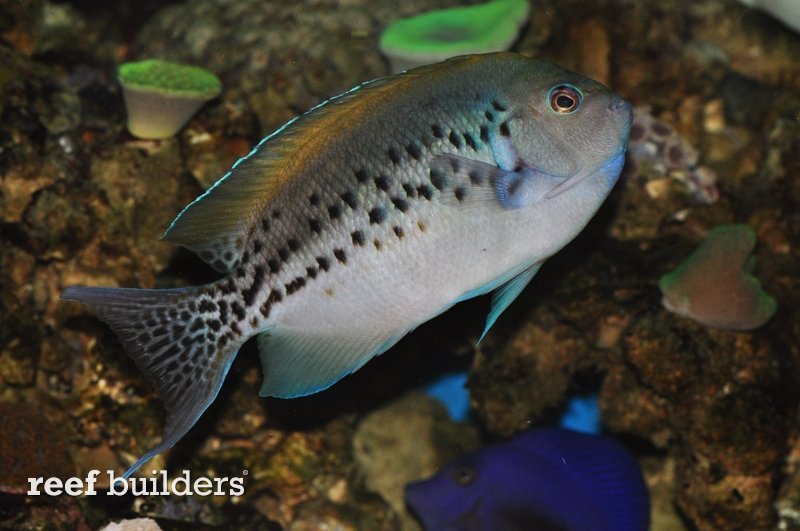
Here’s one last picture showing the reverse side of the fish, and thank you again Jimmy Ma for the constant surprises.
* Jimmy Ma also owns another Genicanthus hybrid. It is a female and a cross between G. melanospilos and G. lamarck. It will be interesting to see how the presence of two opposite sex hybrids affect each other in development and color in the long run.


